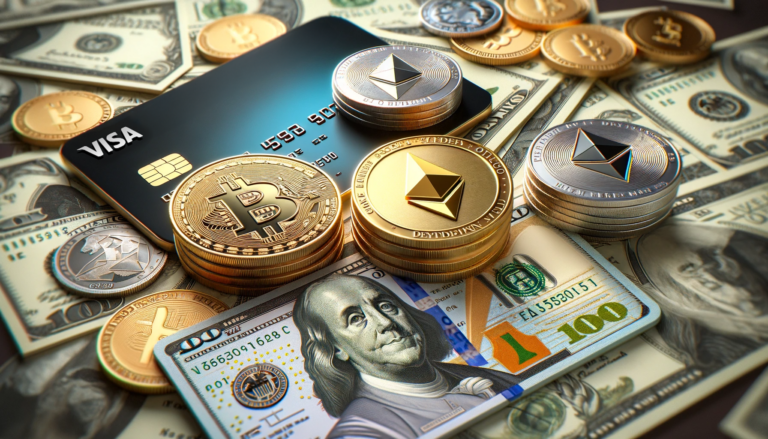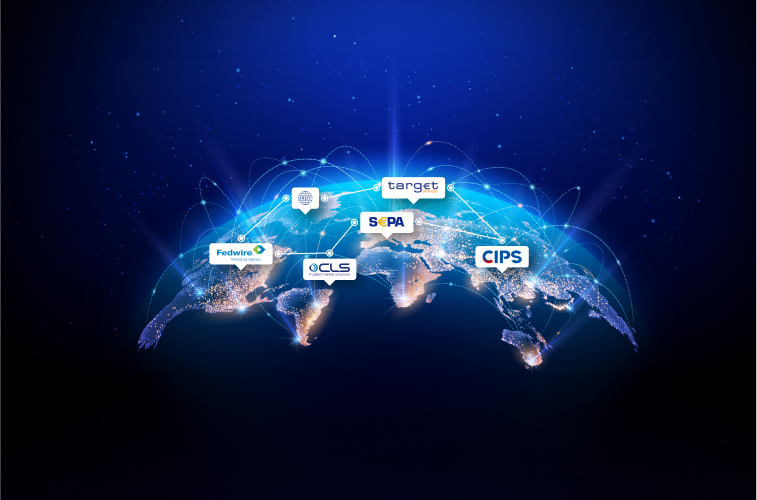Beginners Guide to International Payments
What are International Payments?
International payments involve the movement of money across borders, allowing for financial transactions between entities in different countries. These transactions can take various forms, including the transfer of funds for trade, investments, remittances, and other cross-border activities. They play a crucial role in the global economy by facilitating international trade and fostering economic cooperation.
What are They Used For?
- Trade Transactions: Businesses engage in international payments to pay for imported goods and services or receive payment for exports.
- Investments: Investors transfer funds internationally for various purposes, such as purchasing foreign assets, stocks, or bonds, or receiving returns on investments made abroad.
- Remittances: Individuals use international payments to send money to family members or friends in other countries, often for financial support or to cover living expenses.
- Business Operations: Multinational corporations use international payments for various operational needs, including paying employees, suppliers, and other expenses in different countries.
- Shipping Operations: Engage in international transactions involving payment for fuel, port fee, repairs and services in different local currencies.
Types of International Payments
- Wire Transfers: Traditional bank-to-bank transfers involve sending money directly from one bank account to another. They are reliable but may have higher fees and longer processing times.
- Credit/Debit Card Transactions: Global use of credit and debit cards facilitates international payments, offering convenience and speed. However, fees and exchange rates may apply.
- Electronic Funds Transfer (EFT): Automated transfers between banks, often used for recurring payments or transactions. EFTs can be domestic or international.
- Foreign Exchange (forex) Brokers: Forex play a key role in assisting businesses and individuals in converting and transferring funds internationally, offering competitive exchange rates. These services are commonly utilized for substantial or regular transfers, such as compensating overseas employees or suppliers, as they often yield cost advantages compared to conventional bank transfer methods.
- Cryptocurrency Transactions: Emerging technologies like blockchain enable cross-border transactions using cryptocurrencies like Bitcoin. These transactions are decentralized, providing faster and potentially more cost-effective alternatives.

Various International Payment Systems
1. SWIFT (Society for Worldwide Interbank Financial Telecommunication)
SWIFT is a secure messaging service used by more than 11,000 financial institutions in over 200 countries. While SWIFT doesn’t transfer funds itself, it sends payment orders that are settled by accounts that institutions have with each other for this purpose.
2. Fedwire (Federal Reserve Wire Network)
Administered by the United States Federal Reserve, Fedwire is a system for real-time gross settlement of electronic fund transfers. Financial institutions employ Fedwire for time-sensitive and high-value domestic as well as international payments denominated in US dollars.
3. SEPA (Single Euro Payments Area)
SEPA simplifies the process of conducting cashless transactions across Europe. Whether situated in different parts of Europe, European consumers, businesses, and public administrations can send and receive credit transfers, direct debit payments, and card payments under uniform conditions, rights, and obligations.
4. TARGET2 (Trans-European Automated Real-time Gross Settlement Express Transfer System)
TARGET2 is the real-time gross settlement (RTGS) platform for the euro, serving as the conduit for substantial-value euro transfers between banks within European Union countries.
5. CLS (Continuous Linked Settlement)
It is a specialized system engineered to mitigate foreign exchange settlement risk. It accomplishes this by simultaneously settling both sides of a foreign exchange transaction in the currencies of its 18 members, which include numerous major economies worldwide.
6. CIPS (China International Payment System)
CIPS initiated by the People’s Bank of China, streamlines the clearing and settlement processes for both cross-border and offshore Renminbi (RMB) transactions. Its primary goal is to enhance the internationalization of the Chinese currency.

Risks and Challenges in International Payments
Exchange Rate Risks: Currency values can fluctuate, leading to potential losses or gains in the value of transferred funds.
Regulatory Compliance: Different countries have varying regulations governing international transactions, requiring businesses and individuals to navigate a complex regulatory landscape.
Payment Delays: Time zone differences, public holidays, and varying processing times between banks can lead to delays in international payments.
Security Concerns: Cybersecurity threats and fraud pose risks to the security of international transactions, emphasizing the need for robust security measures.
Best Practices for Sending and Receiving International Transfers
- Understand Fees and Exchange Rates: Prioritize transparency in fees and exchange rates to ensure that both the sender and the recipient are aware of the costs involved.
- Use Reliable Providers: Choose reputable banks or payment service providers with a track record of secure and efficient international transactions.
- Verify Recipient Information: Accurate recipient details are crucial to avoid payment errors. Verify account numbers, names, and other information before initiating a transfer.
- Consider Timing: Be mindful of time zone differences and cut-off times for processing international payments to avoid unnecessary delays.
Terms used in Transactions
An MT103 is an international standard message format that banks and financial institutions use in the SWIFT network in order to instruct a transfer of funds from one customer to another customer. This is a message from the sending bank to the recipient’s bank, instructing the recipient’s bank to credit the recipient with a certain amount.
Often for SWIFT payments, funds have to move between several different banks before they reach the recipient. The way that the banks in between the sender and recipient communicate the transfer of these funds is with an MT202
SWIFT GPI is an innovative tool that enables financial institutions to track most* payments that are sent through the SWIFT network. GPI allows you to see the dates and times a payment passed through a specific bank, as well as provides other information such as if and when funds were applied to a beneficiary’s bank account, or even advises which bank took a processing charge.
*Not all Financial Institutions and Banks adhered to this service, therefore some payments may not be (fully) traceable.
An amendment is an MT message asking the intermediary banks to amend the payment details i.e account holders name (can be common in China where beneficiary banks require this to match exactly with their records).
A recall is another MT request for the funds to be returned to the remitter. This applies when the payment has been sent to another beneficiary altogether, as in the bank account number, the account holder or the SWIFT code are totally different.
The success of a recall depends on the beneficiary’s collaboration. The beneficiary’s bank will ask the account holder to provide consent to return the funds (commonly known as Debit Authority). Funds typically take 5 or 6 weeks to be returned but unfortunately, banks tend to not provide regular updates.
If after several attempts the bank does not receive an answer from the beneficiary’s bank, the recall will be considered unsuccessful.
An IBAN (International Bank Account Number) is a standard international numbering system developed to identify an overseas bank account. The number starts with a two-digit country code, then two numbers, followed by several more alphanumeric characters.
SWIFT has mandated the inclusion of Unique End-to-End Transaction Reference (“UETR”) number in all payments sent over the network. UETRs work like parcel tracking numbers, allowing payments to be located at whatever point in the processing cycle they are, giving financial institutions and end users greater visibility on the status of their payments.
A UETR is a string of 36 unique characters, in the format xxxxxxxx-xxxx-4xxx-yxxx-xxxxxxxxxxxx (e.g. 16245616-3a27-46e4-8cb3-bb8735af4115).
Be aware of potential fraud! Unfortunately, international payments can be a target for fraud. Be aware of common scams, such as phishing attempts or fake invoice scams, and know how to recognise them.
Payment Fraud Red Flags:
- The beneficiary and beneficiary bank are located in different countries
- The beneficiary requests a sudden change of bank details just before sending a payment
- The beneficiary says the change of bank details is due to “accounts being audited”
- Undue urgency to release a payment
If you receive a request to pay money to a new bank account for an existing supplier, contact the supplier via a secure method to verify the request.
In summary, successfully navigating the complex realm of international payments demands a thorough grasp of a wide array of methods and systems, spanning from conventional wire transfers to more advanced technology-based solutions like technologies like cryptocurrencies. To ensure a safe and efficient financial journey across borders, it is crucial to give top priority to transparency, using trustworthy service providers, and remain vigilant against potential fraud. By adhering to these best practices one can significantly enhance the reliability and success of cross-border financial transactions.
GeoServe under its Port DA and Cash Management Service provides very competitive FX Solutions, and deals in about 35 currencies globally.
We’d like to hear from you!
Contact us today and one of our experienced team
members will connect with you soon.
Stay Connected
Subscribe to our newsletter to get company updates on your mailbox.